This article contains information about the literary events and publications of 1929.
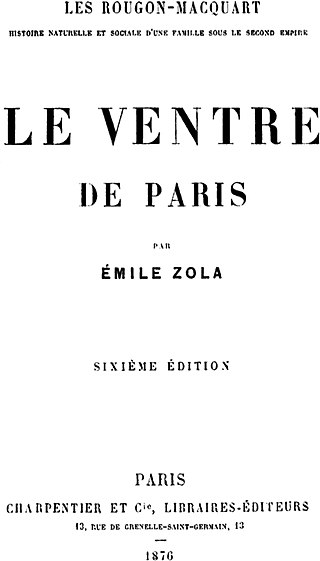
Le Ventre de Paris (1873) is the third novel in French writer Émile Zola's twenty-volume series Les Rougon-Macquart. It is set in and around Les Halles, the enormous, busy central market of 19th-century Paris. Les Halles, rebuilt in cast iron and glass during the Second Empire was a landmark of modernity in the city, the wholesale and retail center of a thriving food industry. Le Ventre de Paris is Zola's first novel entirely on the working class.
Neil John Pearson is a British actor, known for his work on television. He was nominated for the 1994 BAFTA TV Award for Best Actor for Between the Lines (1992–1994). His other television roles include Drop the Dead Donkey (1990–1998), All the Small Things (2009), Waterloo Road (2014–2015), and In the Club (2014–2016). His film appearances include all three of the Bridget Jones films. He is also an antiquarian book dealer who specialises in the expatriate literary movement of Paris between the World Wars.
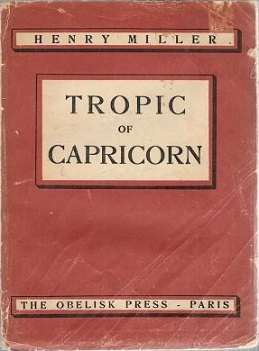
Tropic of Capricorn is a semi-autobiographical novel by Henry Miller, first published by Obelisk Press in Paris in 1939. A prequel of sorts to Miller's first published novel, 1934's Tropic of Cancer, it was banned in the United States until a 1961 Justice Department ruling declared that its contents were not obscene.

James (Joseph) Hanley was a British novelist, short story writer, and playwright from Kirkdale, Liverpool, Lancashire, of Irish descent. Hanley came from a seafaring family and spent two years at sea himself, during World War I. He published his first novel Drift in 1930. In the 1930s and 1940s his novels and short stories focussed on seamen and their families, and included Boy (1931), the subject of an obscenity trial. After World War II there was less emphasis on the sea in his works. While frequently praised by critics, Hanley's novels did not sell well. In the late 1950s, 1960s, and early 1970s he wrote plays, mainly for the BBC, for radio and then for television, and also for the theatre. He returned to the novel in the 1970s. His last novel, A Kingdom, was published in 1978, when he was eighty. His brother Gerald was also a novelist.

Maurice Girodias was a French publisher who founded the Olympia Press, specialising in risqué books, censored in Britain and America, that were permitted in France in English-language versions only. It evolved from his father’s Obelisk Press, famous for publishing Henry Miller’s Tropic of Cancer. Girodias published Vladimir Nabokov's Lolita, J. P. Donleavy’s The Ginger Man, and works by Samuel Beckett, William S. Burroughs, John Glassco and Christopher Logue.
Jack Kahane was a writer and publisher who founded the Obelisk Press in Paris in 1929.

Obelisk Press was an English-language press based in Paris, founded by British publisher Jack Kahane in 1929.
William Hanley was an American playwright, novelist, and scriptwriter, born in Lorain, Ohio. Hanley wrote plays for the theatre, radio and television and published three novels in the 1970s. He was related to the British writers James and Gerald Hanley, and the actress Ellen Hanley was his sister.
United States v. One Book Called Ulysses, 5 F. Supp. 182, affirmed in United States v. One Book Entitled by James Joyce , 72 F. 705 (1934) is a landmark decision by the United States District Court for the Southern District of New York in a case dealing with freedom of expression. At issue was whether James Joyce's 1922 novel Ulysses was obscene. In deciding it was not, District Court Judge John Munro Woolsey opened the door to importation and publication of serious works of literature that used coarse language or involved sexual subjects.
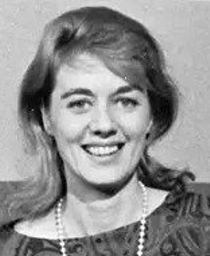
Ellen Hanley was a musical theater performer best known for playing Fiorello H. LaGuardia's first wife in the Pulitzer Prize-winning Fiorello!. She was related to the British writers James and Gerald Hanley, and the playwright, novelist, and scriptwriter William Hanley was her brother.
Proletarian literature refers here to the literature created by left-wing writers mainly for the class-conscious proletariat. Though the Encyclopædia Britannica states that because it "is essentially an intended device of revolution", it is therefore often published by the Communist Party or left-wing sympathizers, the proletarian novel has also been categorized without any emphasis on revolution, as a novel "about the working classes and working-class life; perhaps with the intention of making propaganda". This different emphasis may reflect a difference between Russian, American and other traditions of working-class writing, with that of Britain. The British tradition was not especially inspired by the Communist Party, but had its roots in the Chartist movement, and socialism, amongst others. Furthermore, writing about the British working-class writers, H Gustav Klaus, in The Socialist Novel: Towards the Recovery of a Tradition (1982) suggested that "the once current [term] 'proletarian' is, internationally, on the retreat, while the competing concepts of 'working-class' and 'socialist' continue to command about equal adherence".
Boriswood Limited was a small London publishing house which was active from 1931 until 1938. The directors, at various times, were Cecil J Greenwood, Kenneth W Marshall, John Morris and the New Zealander Terence T Bond. It also incorporated another imprint Cranley & Day. In its short existence Boriswood published at least 68 titles, in fine limited and trade editions, mainly of new poetry and fiction.
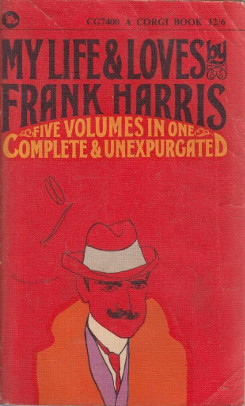
My Life and Loves is the autobiography of the Ireland-born, naturalized-American writer and editor Frank Harris (1856–1931). As published privately by Harris between 1922 and 1927, and by Jack Kahane's Obelisk Press in 1931, the work consisted of four volumes, illustrated with many drawings and photographs of nude women. The book gives a graphic account of Harris's sexual adventures and relates gossip about the sexual activities of celebrities of his day.
Charles Beadle was a novelist and pulp fiction writer, best known for his adventure stories in American pulp magazines, and for his novels of the bohemian life in Paris.

Nautical fiction, frequently also naval fiction, sea fiction, naval adventure fiction or maritime fiction, is a genre of literature with a setting on or near the sea, that focuses on the human relationship to the sea and sea voyages and highlights nautical culture in these environments. The settings of nautical fiction vary greatly, including merchant ships, liners, naval ships, fishing vessels, life boats, etc., along with sea ports and fishing villages. When describing nautical fiction, scholars most frequently refer to novels, novellas, and short stories, sometimes under the name of sea novels or sea stories. These works are sometimes adapted for the theatre, film and television.
The Furys Chronicle is a sequence of five novels, published between 1935 and 1958, by James Hanley (1897–1985). The main setting is the fictional, northern, English town of Gelton, which is based on Liverpool, where Hanley was born, and involves an Irish Catholic family of seafarers, similar to Hanley's own. The action takes place between 1911 and 1927. The first novel in the series, The Furys, was Hanley's sixth novel.

Norah Margaret Ruth Cordner James was a prolific English novelist whose first book Sleeveless Errand (1929) was ruled obscene at the Bow Street Police Court.
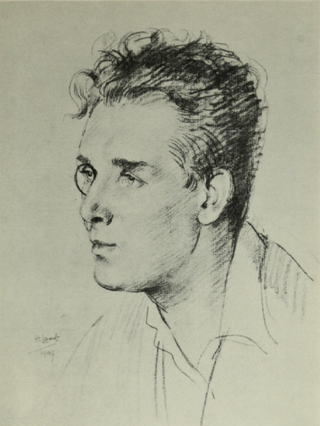
Franklin Thomas Grant Richards was a British publisher and writer. After creating his own publishing firm at the age of just 24 years old, he launched The World's Classics series and published writers such as George Bernard Shaw, A. E. Housman, Samuel Butler and James Joyce. He made "a significant impact on the publishing business of the early twentieth century".
Gladys Sheila Donisthorpe, born Gladys Millie Leon, was a London-born novelist and playwright.









